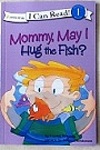Writing For Beginning Readers
People often ask me if I write only when I am inspired to write. The answer is no. I write because I am a writer, and sometimes the only inspiration I need is a contract and a deadline. Do teachers only teach when they are inspired to teach? Do doctors only care for the sick when they are inspired to do so? The answer is obvious. I write because it’s my job. I write because it’s my passion. And I write because it’s what God created me to do.
All writing is creative, of course, because you start with a blank screen and then put words together to create sentences. The sentences create paragraphs, and the paragraphs create stories. But there are many elements to the writing process that are analytical and structured. For example, when I write for beginning readers, I call it “formula writing.” The word count and vocabulary need to follow specific guidelines. One line can only contain up to 36 characters, including spaces and punctuation. Thank goodness a click of the mouse can give me that information! If the line has more than 36 letters, spaces, and punctuation marks, I have to rewrite the line.
Beginning reader books can only have so many lines per page, so many pages per story, and so many words per story. The vocabulary words and sentence structure need to be within the reading level guidelines for each of the several reading levels within this genre.Word repetition is also important. Remember the Dick, Jane, and Sally books? See Dick. See Dick run. See Jane. See Jane run. See Sally. See Sally run. See Spot. See Spot run. After reading one of those books, a child knew how to read the words see and run!
The challenge for today’s writers is to write a story for beginning readers that incorporates all the necessary guidelines, that is fun and lively, and also engages the reader. When writing for the Christian market, the story needs to include a spiritual or moral dimension as well.
I have written dozens of books for beginning readers and the best-selling book of the batch is Mommy, May I Hug the Fish? This story is written with playful rhyme and repetition, which makes learning to read less challenging for a young reader. It incorporates some lessons on age-appropriate boundaries—sometimes Mommy says, “Yes, yes, yes!” and sometimes Mommy says, “No, no, no!” The art is adorable (which I had nothing to do with), and the ending is sweet. I think moms like the book as much as their kids do, so it’s one that they don’t mind reading over and over until their children can read it for themselves.
If authors and publishers could fully understand why some books sell better than others—then all of our books would be best sellers! I am not sure exactly why this one hit the top, but I am happy that little ones are enjoying to read—yes, yes, yes, and no, no, no!.
Here’s to happy little readers!
Crystal Bowman


Comments
Writing For Beginning Readers — No Comments
HTML tags allowed in your comment: <a href="" title=""> <abbr title=""> <acronym title=""> <b> <blockquote cite=""> <cite> <code> <del datetime=""> <em> <i> <q cite=""> <s> <strike> <strong>